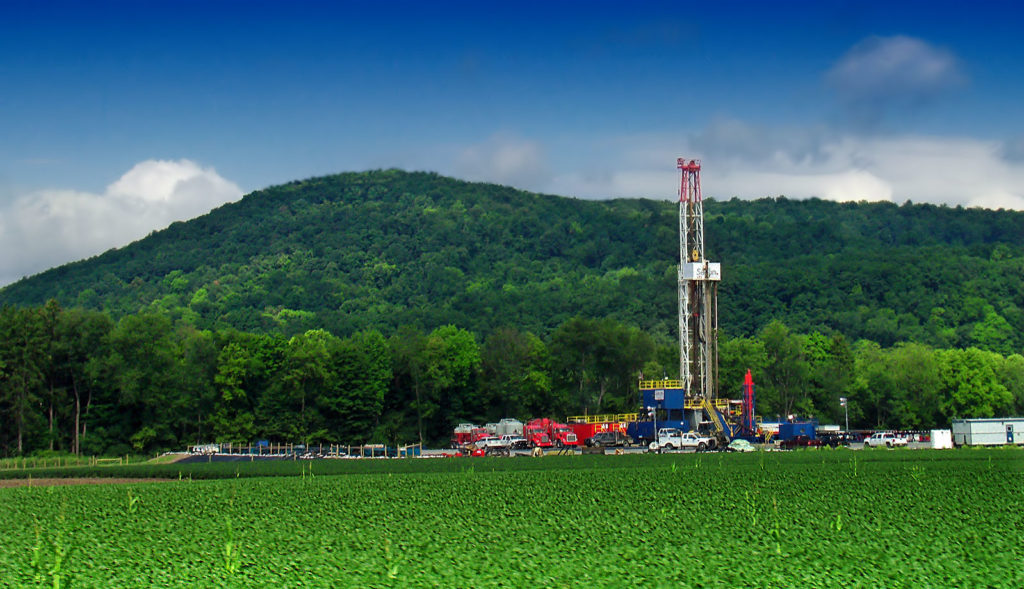natural gas
On February 24 Russia started an unprovoked full-scale invasion of Ukraine. It has resulted in colossal damage and sufferings. How the war will end nobody knows, but it seems clear that Ukraine will remain a free, independent, and democratic nation, while Russia will achieve truly little, if anything of its goals.
The war in Ukraine will also have unintended and significant energy and environmental consequences in all Europe. For some countries there will be changes in the direction of their respective energy structures and plans. In other cases, the direction will remain unchanged, but the speed of change will accelerate.
CONTINUE READING >>

Marcellus shale gas-drilling site in Pennsylvania.
Photo: Nicholas A. Tonelli.
“Prediction is very difficult, especially if it is about the future.” Niels Bohr, the Nobel laurate in Physics, is credited with this line. It is always possible to develop a model that fits the past, but much more difficult to have the same model to correctly forecast the future.
Recent analysis by EIA (Energy Information Agency) and Lazard find that the lowest cost power generation is natural gas, wind and solar. It looks clear, going forward, what to invest in, but before doing so, there may be some lessons to be learnt from the past about making predictions.
CONTINUE READING >>
In 2017 natural gas fired power plants generated 32 % of the electricity in the United States. Coal fired power plants delivered about 30 % of all power, while nuclear delivered about 20 %. Nearly 20 % came from renewable energy sources, out of which 47 % came from hydro power plants and about 37 % came from wind turbines.
Eight years earlier, 2009, when the shale-gas revolution had started to take off, coal was the number one source, 44 % of all electric generation. Natural gas represented 23 % of the generation and nuclear was at 20 %. Renewable generation, basically hydro and wind, produced 10.5 % of the electric power. (EIA data).
Natural gas has replaced coal as the primary source of power generation. Nuclear is basically unchanged at 20 %, while renewables with the growth of wind and solar generation, has doubled and represents about the same proportion of the power generation as nuclear.
In an industry that traditionally changes slow it is a big shift that has happened fast.
What looked like a start of a U.S. nuclear renaissance in 2008, when the first new nuclear units to be built in 30 years were announced, now, 9 years later, looks like a renaissance on hold.
The supplier of the four units, Toshiba/Westinghouse is in bankruptcy. Two units at Summer, South Carolina, have ceased construction and the owner consortia, SCANA/South Carolina Electric & Gas (55%) and Santee Cooper (45%) has announced they are abandoning the project. The two units at Vogtle (Vogtle 3 and 4), Georgia, will continue to be built with the owner consortia Southern Co./Georgia Power (45.7%), Oglethorpe Power (30%), MEAG Power (22.7%) and Dalton Utilities (1.6%) taking over the completion. However, instead of the originally planned start of operations in 2016/17 at a cost of $14 B the start of operation has moved out to 2021/23 and at a cost estimated to reach $28-29 B.
In the electric industry, baseload refers to the minimum level demand over 24 hours. The baseload is generally about 30 – 40 % of the peak load. Traditionally the baseload has been served by low cost power generators, operating steadily and continuously.
Coal fired power plants, nuclear, and (depending on geography) hydro have been the backbone of baseload generation. Operating in “baseload mode” is more or less a prerequisite for nuclear and coal-fired power plants. That is because of their high fixed costs and need to run due to long start-up times and limited ability for load-following.
This paradigm has started to change.
CONTINUE READING >>
“When you come to a fork in the road, take it!” was Yogi Berra’s way to give directions to his house. In his case he was right, since both roads led to his house. In the case of the German Energiewende it is not as clear what road to take and some roads may not even lead to the destination.
CONTINUE READING >>
The U.S. electric industry is undergoing an unprecedented transformation, in terms of magnitude and speed, from a dominance of coal to more natural gas, wind and solar.
Natural gas fired combined cycle generation has among the lowest levelized cost of electricity (LCOE). Between 2006 and 2014 natural gas prices fell by 34 %. Meanwhile the average retail electricity price rose by 17%, which is about the same rate as consumer price index during this period. Only one state, Texas, saw a significant decrease, 13 %, in retail electricity prices.
It triggers the question: Do lower energy costs also mean lower electricity prices for the consumers? The question is straightforward. The answer is more complicated. It is “Yes and No”. Let’s elaborate by looking at available data for the last 10 years.
CONTINUE READING >>
Energy efficiency as well as the “dark green” renewable energy of wind and solar are the best sustainable options to reduce CO2. However, if urgent CO2 reduction is the focus, one must not lose sight of additional options.
CONTINUE READING >>